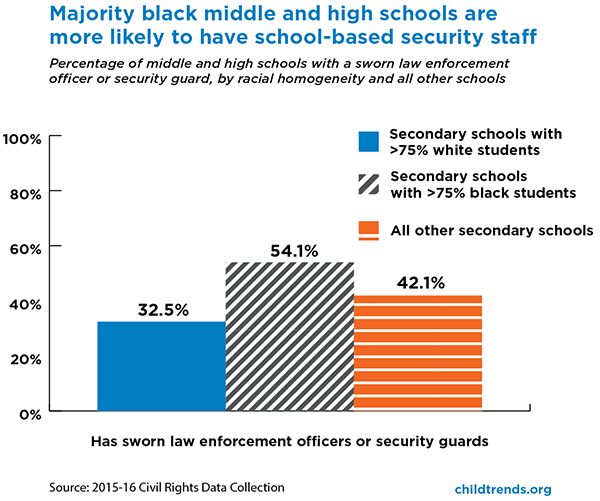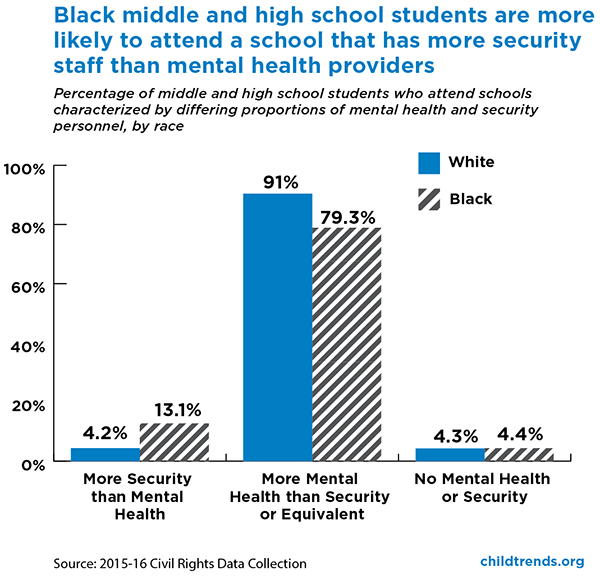Compared to majority white schools, majority black schools are more likely to have security staff
Student exposure to school-based law enforcement and security personnel differs based on their schools’ racial composition, according to new data from the 2015–2016 federal Civil Rights Data Collection. Among homogenous black middle and high schools, where more than 75 percent of enrolled students are black, 54.1 percent had at least one school-based law enforcement or security officer on campus. By comparison, only 32.5 percent of homogenous white middle and high schools (where over 75 percent of enrolled students are white) had such personnel in place.



Data notes: These findings are based on analyses conducted by Child Trends based on 54,066 schools that serve at least one grade 6–12, were not juvenile justice facilities or alternative schools, and that had non-missing data for at least one category of school security (law enforcement officers or school security guards) and one category of school mental health (school counselors, school psychologists, school social workers). An additional 989 schools were not included in the analyses because they had missing data.
Implausible values (where there was greater than a 1:1 student to staff ratio) for each staff type were set to missing. Of the 54,066 schools included in the analyses, 3,158 (5.74 percent) had more than 75 percent black students (homogenous black), 21,280 (38.7 percent) had more than 75 percent white students (homogenous white), and 30,617 (55.61 percent) schools served neither 75 percent black or 75 percent white students (all other schools).
© Copyright 2024 ChildTrendsPrivacy Statement
Newsletter SignupLinkedInThreadsYouTube